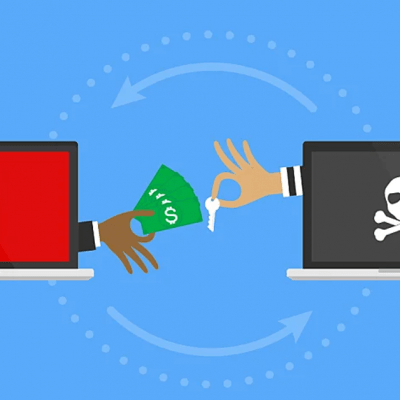Various sorts of cyber assaults can cause significant harm to enterprises. The disoriented organization requires time to restore its footing and figure out what occurred. When the dust settles and the details of the attack are clear, the corporation sends a statement to industry news outlets, resuming its routine.
Professionals in cyber security are constantly defending computer systems against many forms of cyber attacks. Every day, cyber assaults target corporations and private networks, and the diversity of threats are growing rapidly. Everyone should be well-versed in cyber security risks. Let’s dive deep into 7 types of cyber threats that you should be aware of.
Why is it Important to Stay Protected from Cyber Threats?
The importance of cybersecurity is growing. Fundamentally, our society is more electronically dependent than ever before, and this tendency shows no signs of abating. Data leaks that potentially lead to identity theft are increasingly being publicized on social media sites.
Social security numbers, credit card information, and bank account information are now saved in cloud storage services such as Dropbox or Google Drive. Every day, whether you are a person, a small business, or a major global corporation, you rely on computer systems.
Theft of information is the most expensive and fastest-growing type of cybercrime. This is mostly due to the increased accessibility of identification information to the web via cloud services.
Cybercriminals are growing more adept, shifting their targets, how they harm enterprises, and how they attack various security systems. As a result, it is critical to remain informed of and updated on cyber risks.
7 Types of Cyber Threats to Look Out For
Malware Attack:
Malware refers to harmful software, which includes spyware, ransomware, viruses, and worms. When a user clicks on a malicious link or attachment, harmful malware is installed.
It is an umbrella term for a wide range of malicious software that disrupts computer operations. This might involve gaining complete control of the computer, monitoring keystrokes in order to obtain information and passwords, or stealing sensitive data.

Malware may infiltrate a computer in a number of ways. Two of the most popular ploys involve tricking the user into downloading what looks to be an innocuous file or opening a benign email attachment. The most effective strategy to safeguard consumers from malware is to give security awareness training and invest in next-generation antivirus software.
Phishing:
Phishing is one of the most popular forms of cyber assaults used to install malware and steal personal information. Phishers often send their victims a bogus email that looks to be from a reputable source, such as a coworker or a third-party business partner. Typically, the email contains an attachment that, when opened, installs malware on your machine.

Alternatively, the link may direct you to a bogus website that requests personal information. Because the email looks to be from a reliable source, it’s simple to understand how the victim would fall for the hook. Implementing staff awareness training, a solid email spam/virus filtering system, and an event monitoring solution are the most effective ways to prevent phishing (SIEM).
Password Attack:
A cyber attacker with the appropriate password gets access to a lot of information. Data Insider describes social engineering as a “tactic cyber attackers utilize that depends primarily on human connection and typically entails luring individuals into breaching basic security standards.”
Accessing a password database or guessing a password are two further sorts of password assaults.

It is a type of attack in which a hacker cracks your password using various applications and password-cracking tools. Password assaults may be avoided by choosing strong alphanumeric passwords with special characters, not using the same password for various websites or accounts, and regularly upgrading your passwords.
Man-in-the-Middle:
A Man-in-the-Middle (MITM) assault is sometimes referred to as an eavesdropping attack. In this attack, an attacker intercedes between two parties, i.e., the attacker hijacks the session between a client and a host. Hackers steal and modify data in this manner.

This type of attack is common when a visitor connects to an unprotected public Wi-Fi network. MITM attacks may be avoided by paying attention to the security of the website you’re visiting, utilizing encryption on your devices, and avoiding public Wi-Fi networks.
SQL Injection Attack:
SQL attacks are carried out against servers that employ a SQL programming language to manage various forms of crucial information in their databases.
This sort of cyber assault typically necessitates the perpetrator’s pro-level coding abilities, since malicious code must be utilized to trigger servers that run SQL to divulge information that they would not ordinarily reveal.

The criminal simply targets a flaw in the SQL code. An SQL attack’s purpose might range from obtaining a particular type of business-critical information to forcing a server to divulge all of its information stored in SQL code. Using a web application firewall (WAF) for apps seeking access to your databases and encrypting the data in your SQL Server databases are effective defenses against this frequent cyber threat type.
Denial-of-Service:
A Denial-of-Service Attack is a huge danger to businesses. In this case, attackers target systems, servers, or networks and flood them with traffic in order to drain their resources and bandwidth.
When this happens, the servers get overburdened with incoming requests, causing the website to shut down or slow down. This leaves real service requests unattended.

When attackers employ many hacked computers to execute this assault, it is referred to as a DDoS (Distributed Denial-of-Service) attack. To avoid a DDoS attack, do a traffic analysis to identify malicious traffic and get familiar with warning indications such as network slowdowns, periodic website shutdowns, and so on. In such cases, the organization must act quickly.
Insider Threat:
An internal danger, as the name implies, involves an insider rather than a third party. In such a circumstance, it may be someone from within the company who knows everything about it. Insider threats have the ability to wreak enormous harm. Insider threats are common in small firms since employees have access to many accounts containing sensitive information.

There are several reasons for this type of attack, including avarice, malice, or even negligence. Insider dangers are difficult to forecast and hence difficult to manage. To minimize insider threat attacks, firms should foster a culture of security awareness, limit IT resources that workers may access based on their job functions, and train employees to detect insider threats.
Conclusion:
With the growing amount of cybercrimes nowadays, it is important to be aware of cyber threats and how to defend one’s network. The internet has brought about wonderful changes in our lives today, but it also poses a significant problem in terms of data security.
This leads to cyber assaults. Cyber-attacks have a number of harmful consequences. When an assault is carried out, it might result in data breaches, which can result in data loss or manipulation.
Organizations suffer financial losses, consumer trust suffers, and reputations suffer. We employ cybersecurity to prevent cyberattacks. Cybersecurity is the process of preventing unwanted digital access to networks, computer systems, and their components.
Knowing the various forms of cyberattacks makes it simpler to safeguard our networks and systems from them. To avoid losses, understand the types of threats and prevent your data from such threats arising in the future.



